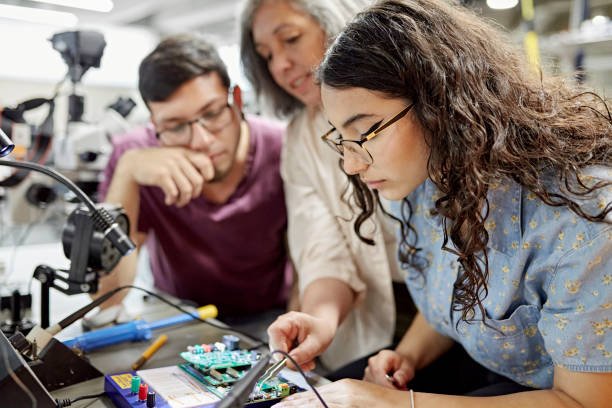CBSE Makes Art Projects Compulsory for Classes 1 to 10 from 2025-26: A Bold Step Toward Holistic Education
In a historic and transformative move, the Central Board of Secondary Education (CBSE) has rolled out a new mandate applicable from the academic session 2025-26, requiring students from Class 1 to Class 10 to submit art-integrated projects. This initiative aligns with the broader vision of National Education Policy (NEP) 2020, which emphasizes experiential learning, creativity, and cultural awareness.

CBSE Makes Art Projects Compulsory for Classes 1 to 10 from 2025-26
The circular, which has taken schools and stakeholders by surprise, states that failure to comply with the mandate—especially by Class 10 students—will lead to the denial of admit cards for board examinations. However, the focus of the initiative is not to burden students, but to promote creative expression and interdisciplinary learning through the integration of art and culture into the curriculum.
Let us explore in depth what this means for students, teachers, schools, and the future of Indian education.
Table of Key Details
| Aspect | Details |
|---|---|
| Mandate Applies To | Students of Class I to X (Academic Year 2025–26) |
| Required Project | Art-Integrated Project (Compulsory) |
| Submission Platform | Kala Setu Portal (centralized digital platform) |
| For Class 10 Students | Mandatory for admit card issuance |
| Environmental Norms | Projects must use eco-friendly, locally available, and recyclable materials |
| Cost Guidelines | No additional financial burden on students or parents |
| Cultural Component | Research and include cultural elements under “Ek Bharat, Shreshtha Bharat” |
| Project Objective | Promote creativity, learning, innovation, and cultural connection |
| State Pairing Example | Sikkim students work on Maharashtra’s art and culture |
| Monitoring Authority | CBSE in collaboration with school principals and nodal officers |
Why Art-Integration in Education Is the Need of the Hour
Traditional classroom learning, while effective in knowledge transfer, often fails to ignite creativity, emotional intelligence, and cultural sensitivity—traits essential in a globally connected world. By mandating art-integrated projects, CBSE is not just introducing an academic task but initiating a paradigm shift in the way Indian students learn, think, and express.
Here are a few reasons this initiative is being widely seen as revolutionary:
Encourages visual, musical, and performance arts as mediums of learning
Reduces over-reliance on rote memorization
Promotes collaborative and inquiry-based learning
Inculcates a sense of cultural identity and belonging
Bridges the gap between textbook learning and real-life application
What Is an Art-Integrated Project?
An art-integrated project combines one or more forms of art (visual, performing, or literary) with core academic subjects like science, mathematics, social studies, or languages. The goal is not only to enhance understanding of the academic subject but also to build creative problem-solving skills, emotional intelligence, and aesthetic appreciation.
Example:
If a Class 8 student is learning about the water cycle, they might:
Paint the water cycle diagram using traditional Indian art styles
Compose a song or skit around environmental conservation
Model the cycle using eco-friendly craft items
Such interdisciplinary integration reinforces both the subject matter and the creative medium.
Integration with “Ek Bharat, Shreshtha Bharat”
CBSE has cleverly aligned this rule with the Ek Bharat, Shreshtha Bharat (EBSB) campaign, which aims to promote cultural unity and state-to-state collaboration. Each school is paired with a different state or union territory and must base its art project on that state’s heritage, arts, music, dance, and folklore.
Examples:
Delhi schools paired with Arunachal Pradesh may explore tribal art forms like Wancho Painting
Punjab schools paired with Odisha may present a Odissi dance-themed skit related to a historical event
Sikkim students studying Maharashtra’s Warli art to demonstrate mathematical symmetry
This cross-cultural learning builds a sense of national pride, unity in diversity, and mutual respect for various traditions.
What Schools Must Do: Step-by-Step Compliance
To implement this successfully, CBSE schools must follow structured steps:
1. Understand the CBSE Circular Thoroughly
School authorities must ensure all faculty, especially class teachers and subject coordinators, are well-versed with the new CBSE circular.
2. Form Art-Integration Committees
Every school should form a core team of art and subject teachers to guide students, monitor progress, and ensure compliance.
3. Choose Themes Based on EBSB Pairing
Themes must align with the assigned cultural pairing. The school should ensure diversity in project types—models, skits, posters, songs, poetry, documentaries, etc.
4. Use Environment-Friendly Materials
Strictly avoid plastic, synthetic, or non-recyclable items. Encourage local crafts, clay modeling, paper mâché, natural dyes, etc.
5. Guide Students in Low-Cost Creativity
Teachers must guide students to recycle waste materials for their projects. No extra money should be spent.
6. Upload on Kala Setu Portal
Projects must be documented, assessed, and then uploaded on the official Kala Setu Portal for review and certification.
